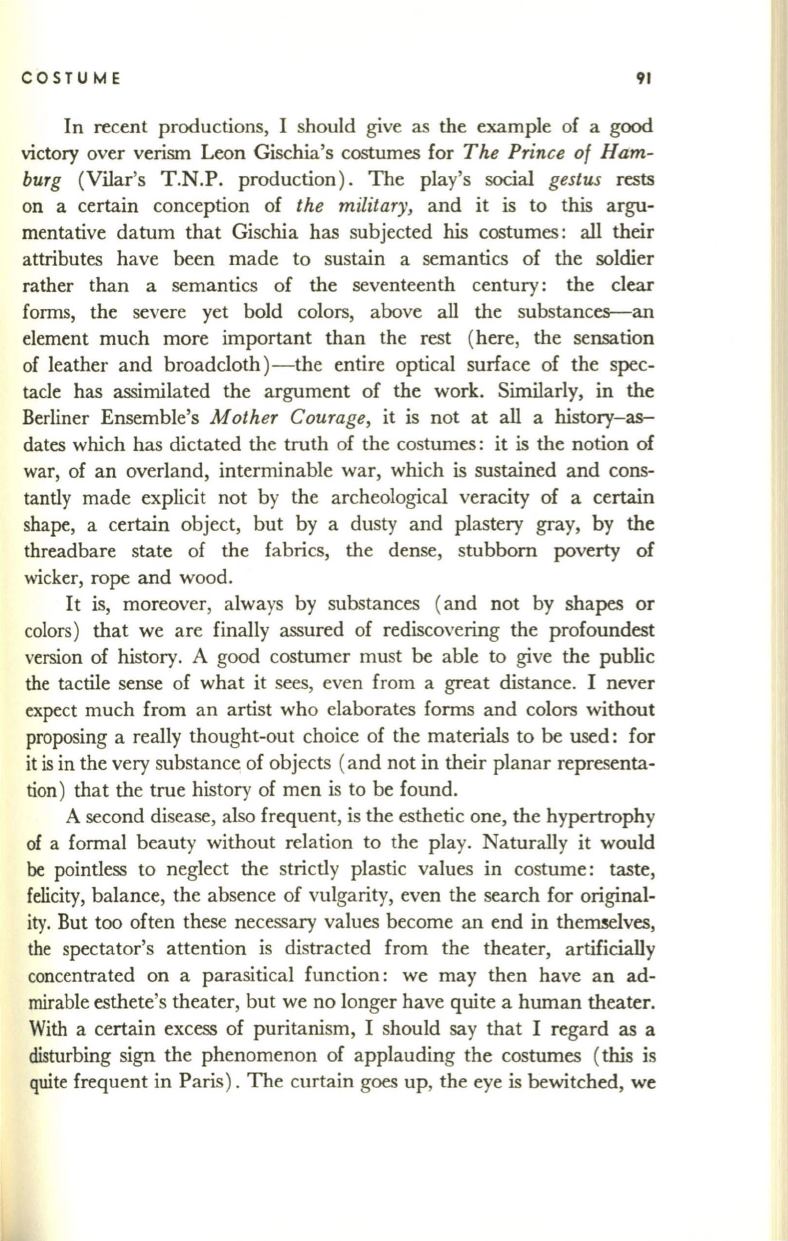
COSTUME
91
In recent productions, I should give as the example of a good
victory over verism Leon Gischia's costumes for
The Prince of Ham–
burg
(Vilar's T.N.P. production). The play's social
gestus
rests
on a certain conception of
the military,
and it is to this argu–
mentative datum that Gischia has subjected his costumes:
all
their
attributes have been made to sustain a semantics of the soldier
rather than a semantics of the seventeenth century: the clear
forms, the severe yet bold colors, above all the substances--an
element much more important than the rest (here, the sensation
of leather and broadcloth) - the entire optical surface of the spec–
tacle has assimilated the argument of the work. Similarly, in the
Berliner Ensemble's
Mother Courage,
it is not at all a history-as–
dates which has dictated the truth of the costumes: it is the notion of
war, of an overland, interminable war, which is sustained and cons–
tantly made explicit not by the archeological veracity of a certain
shape, a certain object, but by a dusty and plastery gray, by the
threadbare state of the fabrics, the dense, stubborn poverty of
wicker, rope and wood.
It
is,
moreover, always by substances (and not by shapes or
colors) that we are finally assured of rediscovering the profoundest
version of history. A good costumer must be able to give the public
the tactile sense of what it sees, even from a great distance. I never
expect much from an artist who elaborates forms and colors without
proposing a really thought-out choice of the materials to be used: for
it
is
in the very substance of objects (and not in their planar representa–
tion ) that the true history of men is to be found.
A second disease, also frequent, is the esthetic one, the hypertrophy
of a formal beauty without relation to the play. Naturally it would
be
pointless to neglect the strictly plastic values in costume: taste,
felicity, balance, the absence of vulgarity, even the search for original–
ity. But too often these necessary values become an end in
them~elves,
the spectator's attention is distracted from the theater, artificially
concentrated on a parasitical function: we may then have an ad–
mirable esthete's theater, but we no longer have quite a human theater.
With a certain excess of puritanism, I should say that I regard as a
disturbing sign the phenomenon of applauding the costumes (this is
quite frequent in Paris). The curtain goes up, the eye is bewitched, we


